The One With True West and Titanic
Here’s hoping that this finds everyone well. I’ve been in a bit of a funk lately because work has been understaffed for literally months at this point and I’m really starting to feel burned out by it. So obviously I’ve been sinking into some things (I poured way, way too many hours a Mad Men rewatch) and I figured it was time for another of these. Thank you for bothering with my strange obsession with sharing.
READS
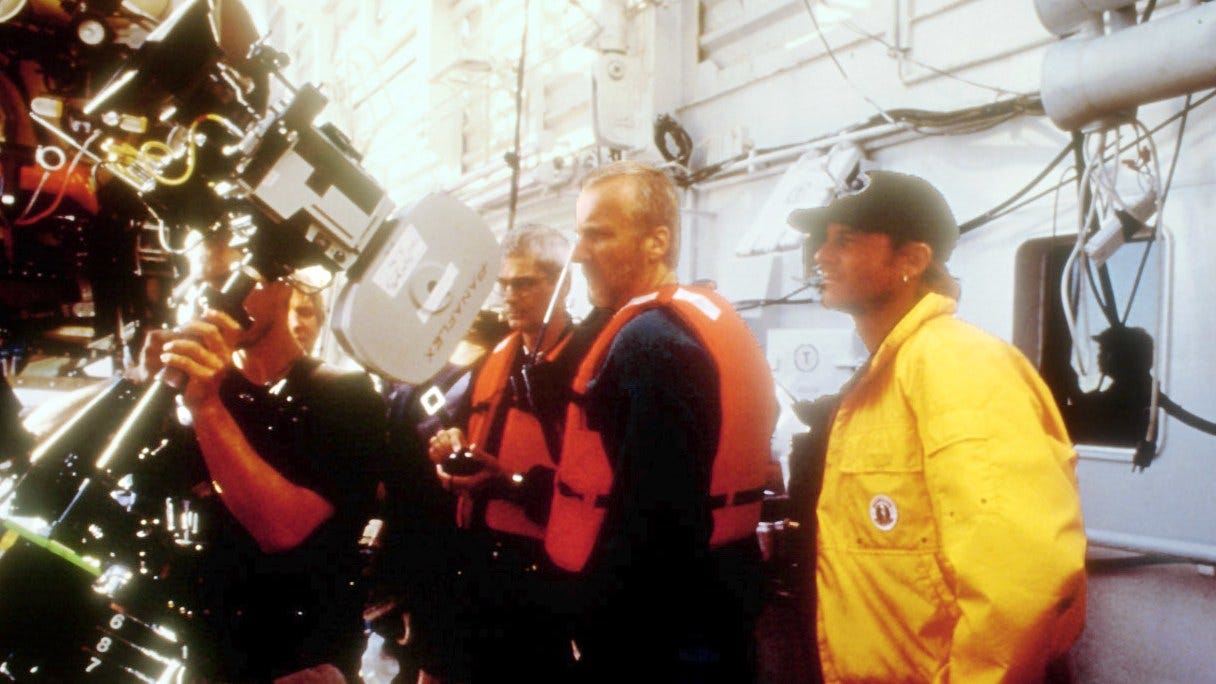
— Thank god for Katy Rich’s Vanity Fair piece on the subject because I never knew this wild-ass story about the time the a crazy amount of crew members in the Nova Scotia unit of James Cameron’s Titanic were hospitalized after somebody (they still don’t know who for sure) laced some chowder with PCP. Apparently, Cameron suffered some additional damage during the incident:
Cameron, who says he was stabbed in the face with a pen by a crew member (“I’m sitting there bleeding and laughing”), watched helplessly as his crew fell apart. “People are moaning and crying, wailing, collapsed on tables and gurneys. The D.P., Caleb Deschanel, is leading a number of crew down the hall in a highly vocal conga line. You can’t make this stuff up.”
It’s legitimately insane that this happened and no one died. I require an episode of Drunk History about this whole mess.
— I really enjoyed Sarah Maslin Nir’s NYT piece on a small southeast Texas museum, The Black Cowboy Museum in Rosenberg, trying to properly recolor the modern age’s imagined image of the American west.
— Tess McClure did a deep dive into the crystal industry for the Guardian, as she went to Madagascar and explored the mining industry that supports western culture’s growing fascination with the gemstones. U.S. demand for overseas crystals and gemstones has doubled over the past three years, and quartz imports have doubled since 2014.
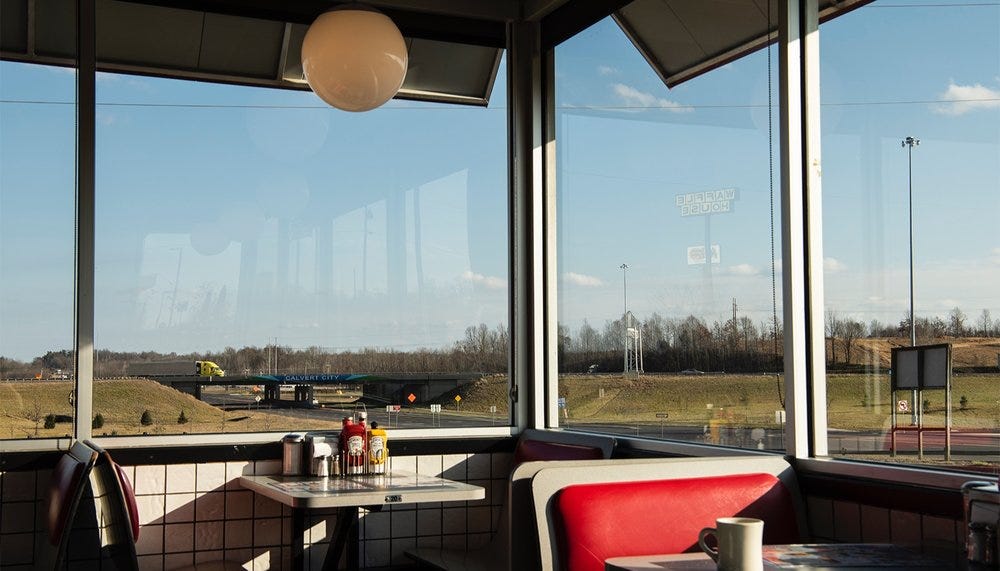
— As a native Kentuckian, I was touched by Micah Cash’s photography project for The Bitter Southerner where he went and photographed Waffle Houses around the south. His project was part pictures and part looking for what about makes the restaurant chain an important space, especially considering that several have been the scene of violent outbursts over the past couple years (a mass shooting in Tennessee, the assault of Chikesia Clemons in Alabama by police officers, and the similar assault of Anthony Wall in North Carolina). “These photographs ask viewers to look up from their hash browns and acknowledge the institutions and structures that create real, yet rarely acknowledged boundaries that feel impossible to break through for much of this country,” Cash said in an accompanying essay. He even stopped at the Calvert City location (picture above).
THE BIG (SOMETHING)
It happened over the span of a couple months. The first time was while I was watching season 3 of GLOW — Netflix’s neon and spandex laden period comedy about women’s wrestling in the 1980s. Two of the characters — Gayle Rankin’s Sheila, a twenty-something firmly entrenched in living as a character who has finally found herself, and Alison Brie’s Ruth, an unlucky but passionate go-getter who excels at playing the heel (that’s wrestling speak for “bad guy”) — are rehearsing a scene from a play for an annual talent show/pride-style event. Sheila, with her newfound confidence goes off-book as Lee, while Ruth hesitantly reads Austin’s lines.
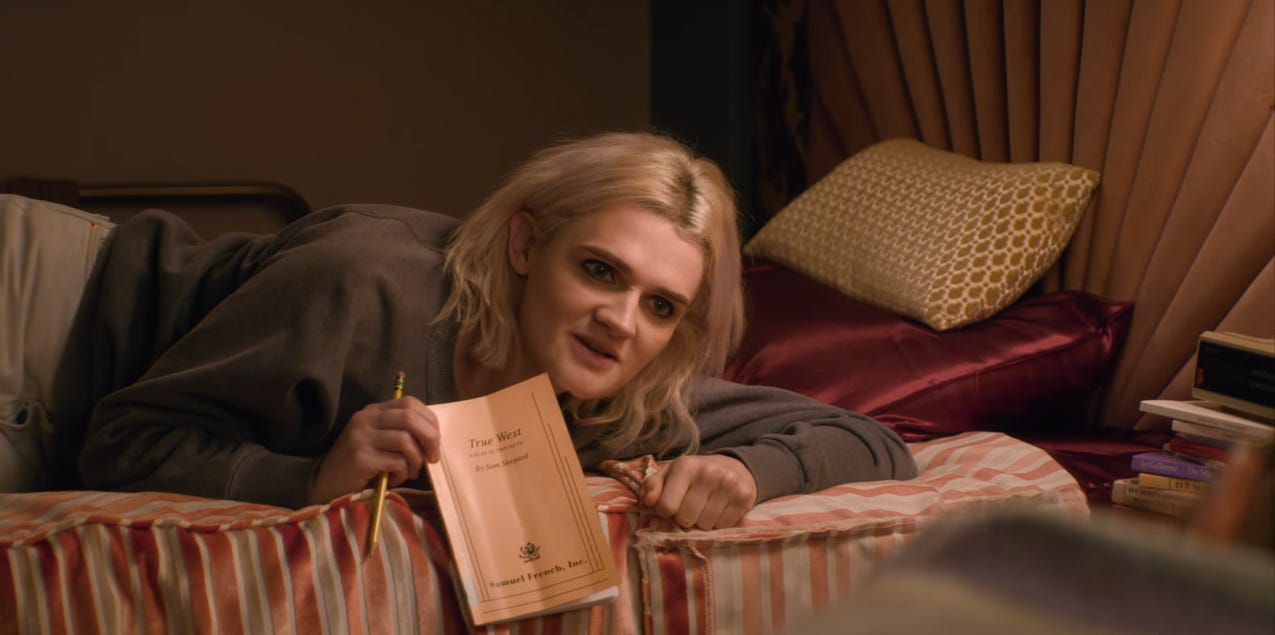
LEE: Where'd you picture me?
AUSTIN: Oh, I don't know. Different places. Adventures. You were always on some adventure.
LEE: Yeah.
AUSTIN: And I used to say to myself, "Lee's got the right idea. He's out there in the world and here I am. What am I doing?"
LEE: Well you were settin' yourself up for somethin'.
I remember sitting up a little on the couch during that scene. It was my first exposure to Sam Shepard’s “True West” — a tale of two brothers, a Hollywood screenwriter and a drifter, that push each other over the edge of sanity in an exploration of duality, creativity, and masculinity.
Over the next couple weeks — I’m not sure why — I thought about buying a copy of the script, but ultimately didn’t. Then, Sam Shepard resurfaced when I got sent an old Molly Lambert essay on author photos. Then again, later that week when I was reading about Sam Peckinpah’s “The Wild Bunch” and the constant reinvention of the Western genre after watching the movie. I tried to find a version to watch and found out that a legendary Broadway revival of the play was done in the early ‘00s starring Philip Seymour Hoffman and John C. Reilly. They would flip a coin backstage to decide who would play which brother.
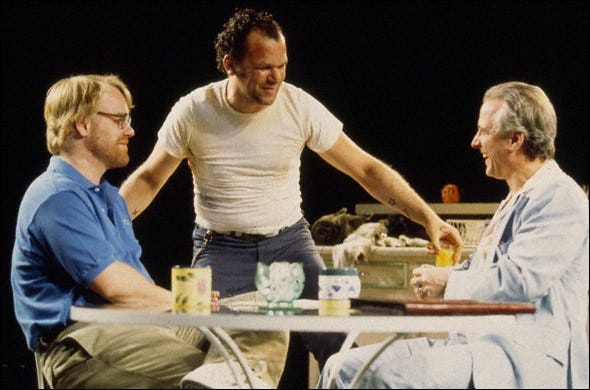
Hoffman, who would become undoubtedly one of the finest actors of his generation, and Reilly, an exceptional dramatic actor who had yet to become the man that would star in “Step Brothers” and “Walk Hard: The Dewey Cox Story,” seemed like a dream cast. I watched an old episode of Charlie Rose where he interviews the pair about the whole process and frantically Googled to see if a full video of the production existed anywhere. Nothing doing, only local productions and the original John Malkovich/Gary Sinise run transferred off a VHS tape.
So I ordered a copy and fell in love with it.
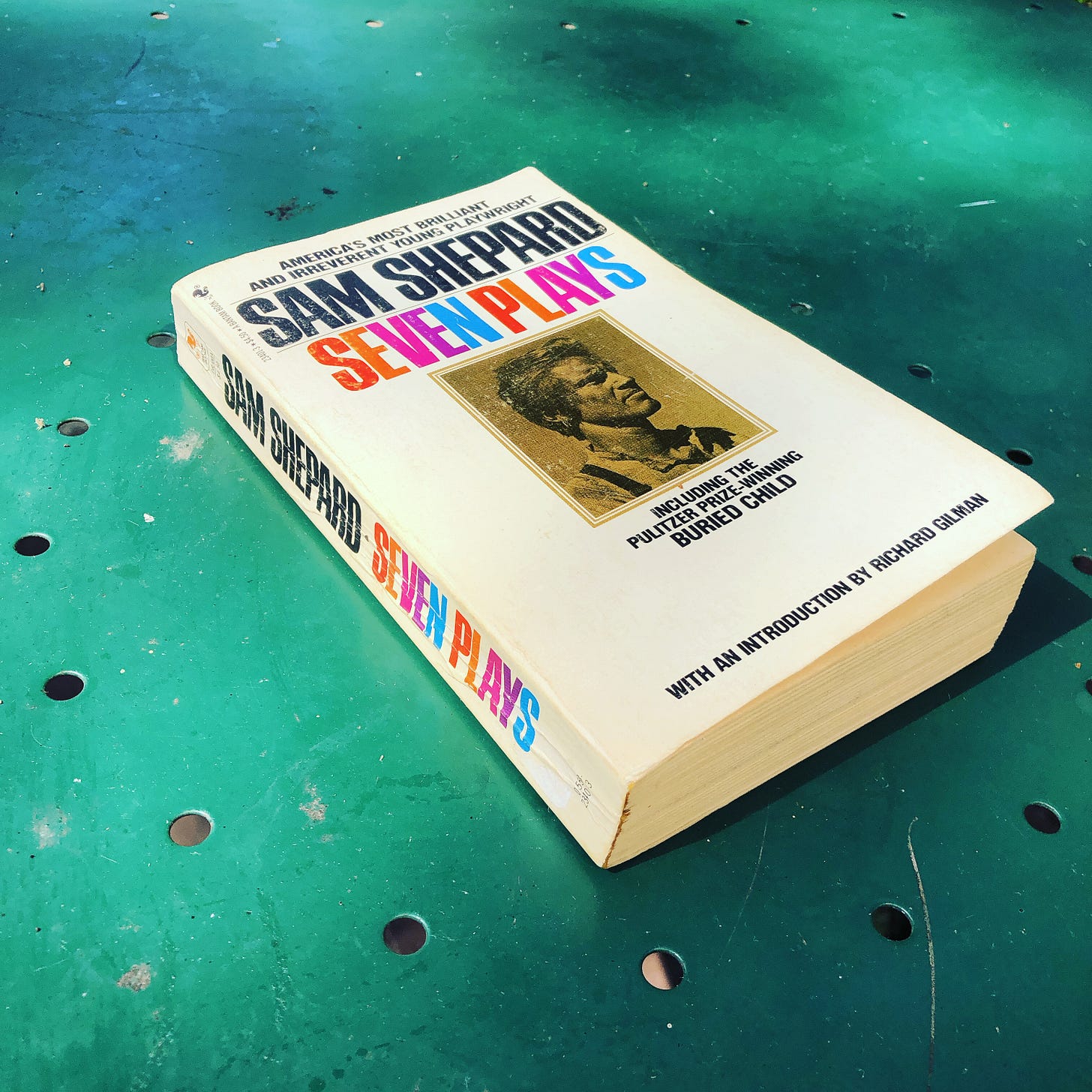
Particularly, I became fascinated with Shepard — this strange man who was born in Illinois and died just outside of Lexington, Kentucky, and managed to write these plays that so heartily evoke the West. This passage of dialogue from Lee as a he dictates his script idea to Austin is nothing short of magical:
“So they take off after each other straight into an endless black prairie. The sun is just comin’ down and they can feel the night on their backs. What they don’t know is that each of ‘em is afraid, see. Each one separately thinks that he’s the only one that’s afraid. And they keep ridin’ like that straight into the night. Not knowing. And the one who’s chasin’ doesn’t know where the other is taking him. And the one who’s being chased doesn’t know where he’s going.”
Synchronicities are strange, but sometimes they’re just fate leading you to the right thing at the right time.
TUNES
Kelsey Waldon is easily one of the best artists to come out of western Kentucky in the last decade. Her incredible new record, White Noise, White Lines, dropped today. My conversation with her a few weeks ago was, as usual, heartwarming (the article is running on Sunday). Our fathers have been friends for over a decade and it’s just nice to see a family friend do so well. Here’s my favorite cut off the album, a Bobbie Gentry-style funky country number.
It’s no secret that I love Phoebe Bridgers. Her solo material, boygenius (her + Lucy Dacus + Julien Baker), and, most recently, Better Oblivion Community Center — her collaboration with “sad boy legend” Conor Oberst. Here they are covering another of my favorites.
Morabeza Tobacco has dreamy grooves for days, a strange kind of far away, twinkly, warm dream music that reminds me of Alvvays and Tame Impala at times.
It feels like every other day Adrienne Lenker is trying to break my heart and I welcome it every time. A little jangly and melancholy as hell. Perfect fall music.
I don’t know why it took me until the last month or so to get into Jack Cooper’s post-Ultimate Painting material. It’s in the same aural family as Kurt Vile but distinctly lacking in the guitar hero department, sun-washed and stunningly sad stuff.
STUFF I WROTE
The only thing that I’m particularly proud of that I’ve written since the last newsletter was this piece on If I Don’t Make It, I Love You — a collection of essays by the survivors of school shootings. Being from Paducah, it’s strange because we’ve been hit by two in the last 20 years — Heath in 1997 and Marshall in 1998, which are within 30 miles of each other. For the story, I talked with survivors of both about their contributions to the collection and why they think this book is a necessary thing.
If you dug this, please share. And if you’re interested in talking with me about anything, hit me up on Twitter @doperle or just reply to this email.


